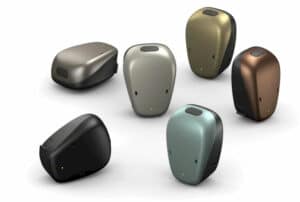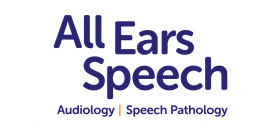Bone Anchored Hearing
What is a Bone Anchored Solution?
For people with a conductive hearing loss or single-sided deafness, a bone anchored hearing device may offer the best hearing solution. This device transmits sounds via bone conduction to naturally stimulate the inner ear (cochlea).
Choosing the right Bone Anchored Hearing Solution for your needs
For some clients several implantable technology solutions may be suitable, particularly for those with single sided deafness. We believe our pre-operative program ensures all hearing options are explored thoroughly and that you receive optimal pre- and post-operative care. Written information will be provided throughout the program. This is to ensure your expectations are realistic and that you have supports in place following surgery for the rehabilitation program required. Our cochlear implant recipients have found this most beneficial

1. The implant which is surgically positioned by your ENT Surgeon in the mastoid bone behind your ear. You may choose an Attract system which uses a magnet to attach the internal implant to the external sound processor, or a Connect system which uses a small abutment.

2. The externally worn sound processor detects sound and transforms it into vibrations to directly stimulate the inner ear through bone.
Post-implant audiological care is critical for the success of bone conduction implantation.
Following surgery, your ENT surgeon will guide your audiologist as to the most appropriate time to Switch-On your device. This can be up to 6 weeks following surgery to ensure the system has had sufficient time to integrate (osseointegration) internally with your bone (skull).
Typically, two appointments are arranged during the Switch-On process to achieve optimal audibility and to ensure that you are confident in managing your device.
As bone conduction implants use your natural hearing, you can expect to adapt and delight in your improved hearing quickly. We will continue to monitor you 6 monthly to fine tune your device to reflect any changes in hearing. Monitoring of the abutment site is also important for infection.
Lifelong Hearing & Support
At All Ears & Speech we are committed to lifelong hearing and support. Your hearing needs and goals may change across your lifespan, and we are here for you every step of the way. This includes:
- Routine programming of your device using the latest techniques to ensure optimal outcomes
- Regular assessments to highlight your progress and identify areas requiring further support
- Liaison with others involved in your care (e.g., you may have a conventional hearing aid in your other ear managed by another provider, external speech pathologist, medical specialists etc.)
- Equipment troubleshooting and maintenance support (batteries, replacements, spare parts, magnets)
- Loan device/s should your equipment require maintenance or repair
- Equipment upgrades as new technology emerges
- Advocate for you with the National Disability Insurance Scheme (NDIS), Hearing Australia, Department of Veteran’s Affairs and Private Health Providers.
- Support letters for accidental loss or damage under your home and contents insurance policy
Need additional help in challenging listening situations?
We're All Ears!
For those listening situations where even the most advanced hearing technology does not meet all your listening goals, assistive listening devices can provide the added boost needed over distance or in loud background noise.




